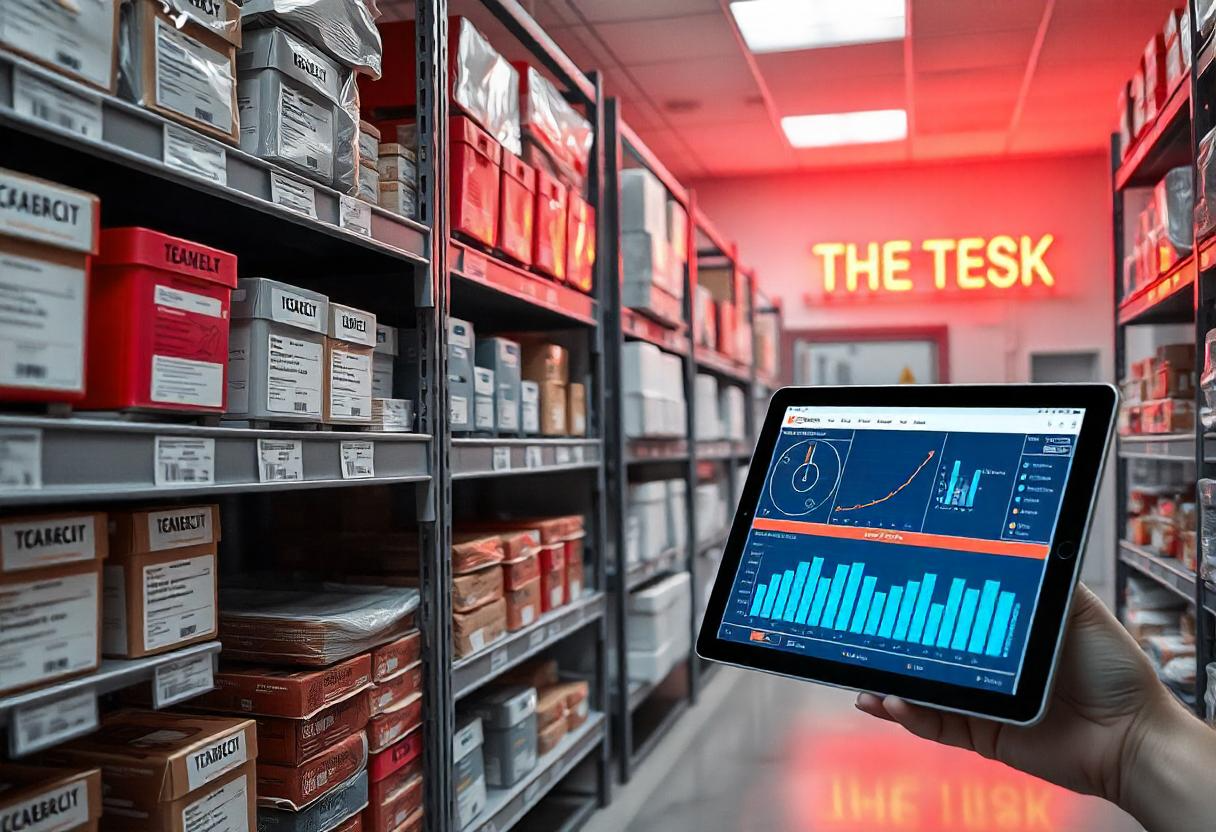The healthcare industry faces constant challenges in managing inventory efficiently. Hospitals must balance cost control with the need for critical medical supplies. One of the most effective solutions is a consignment inventory system. A well-structured book on this topic can serve as a valuable guide for hospital administrators, procurement managers, and supply chain professionals.
A consignment inventory system allows hospitals to stock medical supplies without upfront purchasing costs. Instead, suppliers retain ownership until items are used. This system enhances operational efficiency, reduces waste, and ensures that essential supplies are always available.
This article explores the significance of a book on consignment inventory system for hospitals, its key takeaways, and why every healthcare facility should consider this innovative inventory model.
What is a Consignment Inventory System for Hospitals?
A consignment inventory system is a supply chain strategy where medical supplies are stored within a hospital but remain the supplier’s property until used. This model ensures that hospitals only pay for what they consume, reducing the burden of excess inventory.
How Does It Work?
- Suppliers deliver medical products to hospitals.
- The hospital stores these products without immediate payment.
- Items are tracked using an inventory management system.
- Payments are made only for used items.
- The supplier replenishes stock as required.
This system streamlines hospital logistics and improves financial efficiency.
Why Hospitals Need a Book on Consignment Inventory Systems
A book on consignment inventory system for hospitals provides comprehensive insights into implementing and managing this system. Such a resource is crucial for healthcare professionals looking to enhance their supply chain operations.
Key Benefits of a Book on This Topic
- Understanding Inventory Optimization – Learn best practices for managing hospital stock efficiently.
- Cost-Saving Strategies – Discover how to minimize waste and financial risks.
- Compliance & Regulatory Insights – Ensure adherence to healthcare policies and supplier agreements.
- Case Studies & Real-Life Examples – Gain knowledge from hospitals that have successfully adopted this system.
With a structured guide, hospitals can implement consignment inventory systems effectively, leading to better patient care and reduced operational costs.
Key Topics Covered in a Book on Consignment Inventory Systems
A well-researched book on this topic would cover:
1. Introduction to Consignment Inventory for Healthcare
- Definition and importance
- Differences between traditional and consignment inventory
2. Benefits of a Consignment Inventory System in Hospitals
- Reduced financial burden
- Improved supply chain management
- Increased efficiency in hospital operations
3. Implementation Strategies for Hospitals
- Steps to integrate a consignment inventory system
- Choosing the right suppliers and partners
- Setting up tracking and monitoring tools
4. Technology & Software for Consignment Inventory
- Importance of digital tracking systems
- Best inventory management software for hospitals
- Role of automation in reducing errors
5. Challenges & Solutions in Consignment Inventory Management
- Common pitfalls and how to avoid them
- Managing supplier relationships
- Ensuring regulatory compliance
6. Case Studies from Leading Hospitals
- Success stories of hospitals that implemented consignment inventory
- Lessons learned from real-world applications
A comprehensive book covering these areas would be a valuable asset for healthcare administrators, hospital procurement teams, and supply chain professionals.
Advantages of Implementing a Consignment Inventory System in Hospitals
Hospitals that adopt consignment inventory systems experience numerous benefits:
1. Reduced Upfront Costs
Hospitals no longer need to invest large sums in medical supplies. Payments are made only when items are used, freeing up financial resources for other critical areas.
2. Improved Inventory Management
With real-time tracking, hospitals can maintain optimal stock levels, preventing shortages and excess inventory.
3. Better Supplier-Hospital Relationships
A well-managed consignment system fosters strong partnerships between hospitals and suppliers, ensuring a steady flow of essential medical items.
4. Increased Patient Safety
By reducing stockouts and expired products, consignment inventory systems contribute to better patient care.
5. Compliance with Healthcare Regulations
A book on this system provides guidance on regulatory compliance, helping hospitals avoid legal complications.
How to Choose the Right Book on Consignment Inventory System for Hospitals
When selecting a book on this topic, consider the following factors:
1. Comprehensive Coverage
Ensure the book covers implementation strategies, challenges, case studies, and technology solutions.
2. Practical Examples
Look for real-world applications that provide actionable insights.
3. Industry Expert Authors
Books written by supply chain or healthcare experts offer valuable, research-backed information.
4. Up-to-Date Information
Healthcare regulations and technologies evolve, so choose a book with recent data and trends.
5. Readability & Accessibility
A well-structured book with clear explanations, diagrams, and case studies enhances learning.
Best Practices for Hospitals Using Consignment Inventory Systems
Hospitals implementing a consignment inventory system should follow these best practices:
1. Use Advanced Tracking Tools
Invest in barcode scanning and automated tracking systems to monitor inventory levels accurately.
2. Establish Clear Contracts with Suppliers
Define payment terms, restocking schedules, and liability clauses to avoid disputes.
3. Train Staff on Inventory Management
Ensure healthcare professionals understand how the system works to prevent mismanagement.
4. Monitor Performance Regularly
Conduct regular audits to assess efficiency and identify areas for improvement.
5. Optimize Stock Replenishment
Set up automated alerts for low-stock items to prevent supply shortages.
By following these practices, hospitals can maximize the benefits of consignment inventory systems.
Also read: crypto30x.com Gigachad: Crypto Meets Internet Culture
Conclusion
A book on consignment inventory system for hospitals serves as an essential resource for healthcare professionals seeking to optimize inventory management. This system reduces costs, improves supply chain efficiency, and enhances patient care. By understanding its implementation, benefits, and challenges, hospitals can make informed decisions that lead to long-term operational success.
Whether you are a hospital administrator, supply chain manager, or procurement officer, investing time in learning about consignment inventory systems can transform your healthcare facility’s logistics and financial management.
FAQs
What is the primary advantage of a consignment inventory system in hospitals?
It allows hospitals to stock essential medical supplies without upfront payments, reducing financial strain and improving inventory management.
How does a consignment inventory system improve patient care?
By ensuring a continuous supply of medical products, hospitals can prevent stockouts, leading to better patient treatment and safety.
Are there any challenges in implementing consignment inventory systems?
Yes, challenges include supplier coordination, regulatory compliance, and the need for advanced tracking systems. However, proper planning can mitigate these issues.
What technology is used to manage consignment inventory in hospitals?
Hospitals use inventory management software, barcode scanners, and automated tracking systems to monitor stock levels efficiently.
Can small hospitals benefit from a consignment inventory system?
Absolutely. Small hospitals can reduce costs, improve efficiency, and ensure essential supplies are always available.
How can a book on consignment inventory systems help hospitals?
It provides detailed guidance on implementation, benefits, challenges, and real-life case studies, helping hospitals make informed decisions.
Is consignment inventory management compliant with healthcare regulations?
Yes, but hospitals must follow supplier agreements and local regulations to ensure compliance.





